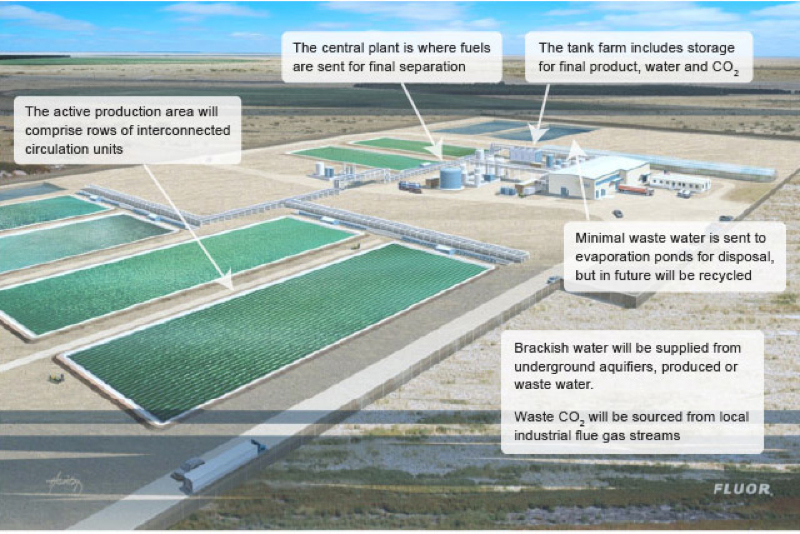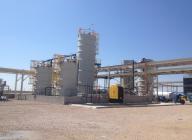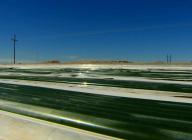Synthetic biology makes sustainable biofuels possible
 Scarred by the failure of first generation biofuels and by the increasingly bitter controversy over the burning of imported biomass at Drax and elsewhere, the UK has backed away from research into using biological materials for energy conversion or storage. This behaviour is mirrored across Europe. Outside the US, research into using natural materials has almost ceased as concerns over the diversion of land from food production and low carbon savings have overwhelmed the case for increased renewable energy.
Scarred by the failure of first generation biofuels and by the increasingly bitter controversy over the burning of imported biomass at Drax and elsewhere, the UK has backed away from research into using biological materials for energy conversion or storage. This behaviour is mirrored across Europe. Outside the US, research into using natural materials has almost ceased as concerns over the diversion of land from food production and low carbon savings have overwhelmed the case for increased renewable energy.
This is a mistake, and possibly a tragic one. In sunny parts of the globe, solar PV may provide the cheapest source of electricity. But PV doesn’t provide either reliable 24 hour power or a source of liquid fuel for transport. Since electricity is typically provides less than 40% of total energy demand, the world needs to find inexpensive low carbon sources to meet other needs. Biological sources of energy are vital, not least because they can both store power (thus complementing intermittent sources such as PV) and can be converted to high density liquid fuels suitable for transport. A piece of wood is a semi-permanent store of solar energy and can be converted - albeit expensively at present - to a liquid hydrocarbon. Algae are similar. But work on even relatively simple technical problems such as improving the slowness of the breakdown of cellulose molecules in anaerobic digesters simply isn’t taking place in the UK.
By contrast, this note looks at Joule Unlimited, a seven year old US company that is making ethanol and other fuels from CO2, sunshine and water. Like many other US bioenergy companies, Joule has raised what to European eyes look like prodigious amounts of capital. But the $160m of investors’ money has bought what seems like exciting intellectual property. If Joule can do as it promises and produce transport fuels for less than $50 a barrel of oil equivalent, it can undermine the conventional supply of oil, a market currently worth about $8bn a day.
Why has commercialising bioenergy proved so difficult? The problems are this. First, biology isn’t very good at turning photons into usable energy. Only in unusual circumstances can much more than 2% of the energy hitting a square metre be converted into chemical energy through photosynthesis. A modern solar farm manages about 5%. (The collection efficiency of an individual panel is of course higher than this but panels don’t occupy all of the land in a solar farm).
The second problem is that biological materials generally only contain a small percentage of usable molecules, reducing energy production by unit area still further. Ethanol made from US corn averages is the typical example, producing only about 2.8 kWh of liquid fuel a year per square metre of cropland, equivalent to about a quarter a litre of petrol. A solar farm generates about 20 times as much energy. Third, most processes that convert the latent energy (I’m using this term in a non-technical sense) into usable fuels are extremely expensive and often inefficient.
These unattractive features stop European finance flowing into biological energy. Not so in the US. There hundreds of venture capital financed businesses search for a way of generating useful carbon-based molecules from metabolic processes at prices that will make fuels competitive with petrol. Many of these companies, such as Cool Planet, are looking for cheap ways of breaking down the lignin in trees or the cellulose in plants into useful liquids or gases. By contrast, Joule is using synthetic biology to engineer bacteria to express carbon-based molecules such as ethanol that can be used as transport fuels. Joule Unlimited’s ‘refinery’ produces ethanol, or other liquid stores of energy including a diesel substitute, directly from the bacteria, requiring no further processing.
If what Joule says is right, its bacteria can turn about 14% of the energy in sunlight into fuel, perhaps six or seven times as much as plants. Let’s about clear about this: if true, this is staggering, almost magical, achievement. It means that the amount of energy captured by the bacteria and converted to liquid fuel could be greater than PV panels with a similar areal footprint.
Ambitious claims from biofuels companies aren’t in short supply and I’m not qualified to assess the plausibility of Joule’s synthetic biology. Headline forecasts include a cost of production for ethanol of about $1.20 a US gallon, or less than 6 cents/about 3.5 pence/kWh.[1] This is less than the price of refined petrol (prior to taxes) of around 5 pence per kWh.
How does the Joule process work? A genetically engineered strain of cyanobacteria mixed with (non-potable) water is introduced into clear tubes running horizontally. A source of carbon dioxide is added, perhaps the waste gas from an industrial process. The CO2 is forced through the tubes, shaking the bacteria and ensuring even exposure to sunlight. Conventional bacteria use the energy from light to grow and reproduce but Joule’s bacteria employ it to produce a useful hydrocarbon instead. Joule’s cyanobacteria have been genetically engineered to produce specific fuels, such as simple ethanol. The ethanol ‘excreted’ from the bacteria is distilled from the circulating water, ready to be used in a car’s engine.
Joule talks of building cyanobacteria plants across 400 hectares or more to get maximum economies of scale. It claims that it can produce almost 100,000 litres of ethanol a year from each hectare of land, compared to less than 5,000 litres of ethanol refined from corn and grown on prime food production land, a twenty fold improvement.
As importantly, its refineries can be sited on otherwise unusable land and can use water that is too salty or otherwise impure for drinking or for irrigation. These advantages hugely add to the appeal of its technology. Joule can claim that its production plants do not reduce food production or add to water scarcity. In a recent announcement it also improved its claim to carbon neutrality by suggesting it would provide all the electricity it needs to run its plants by installing adjacent PV farms.
The Joule process needs a source of CO2. Many industrial processes, such as cement manufacture, may produce carbon dioxide in sufficient volumes to act as a feedstock. The problem may be that relatively few sources of large amounts of CO2 exist close to the non-agricultural land that it intends to use for fuel production. Nevertheless, the company claims to have identified at least 1,000 worldwide sites. To produce all the worlds’ oils from the Joule process, we’d need approximately 25 million hectares, the area of the whole United Kingdom but less than 2% of world’s area of farmed land.
This is a large acreage. But contrast this with what we would need for ethanol made from corn. At current productivity, biofuels would need over two thirds of the world’s total arable land area to replace conventional oil. This would reduce food production catastrophically, but if Joule achieves what it plans, all its refineries would be on land that is unusable for food production.
Europe’s aversion to using technology to make energy carriers from biological processes is entirely understandable. Devoting increasing acreages to growing corn or wheat for ethanol makes little financial or environmental sense. But this shouldn’t imply that we reject all forms of bioenergy as we appear to be doing at the moment. Joule’s pilot plant in New Mexico is one of the scores of US bioenergy experiments that will eventually create the world’s supplies of non-fossil liquid fuels. If Europe and other parts of the world continue with blanket opposition to all forms of biological power, we run the risk of being unable to decarbonise anywhere near as fast or as comprehensively as the world needs.

